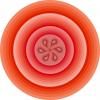Search the Community
Showing results for tags 'CMYK'.
-
Hello, i was wondering if Affinity Designer has possibility to convert vector elements (selecting by layers) from color CMYK (or RGB) to CMYK but only in black K. I have to prepare black and white maps for printing and file is in CMYK with all colors, but lines are in greyscale. So to have better quality i have to change CMYK colors only for K (black). I can't find information about this at web page. I'm using Affinity Photo as Photoshop alternative - and it is really good for my needs. Thank you! bests Aerobie
-
Dear Community, its my first question here and I'm a “newcomer“ of the photography-world, but I think that you have an answer for my question. We are a small company from Germany which are selling gift paper & -ribbons. At the moment we are modify our catalogue and online-shop. Caused by that we need a lot new photos of our products, which we release with PhotoKey 7 Pro (very easy and good) want to edit afterwards with Affinity. Certainly a lot of our products are similar but in different colors. We want to shot one or two main pictures which are colored afterwards in the certain color. We have already tried it with "recolor" or "HSL-Adaptation" but there it is only possible to change the color with Hue/HSL. Primarily we are working with Pantone for our products, but also have the option to use RGB/HEX/CMYK. My question now: How can I colorize our images in a precise color (Pantone/RGB/CMYK/HEX) “fast & easy"? Here you find an example for one of our products and I will upload some images which we already shot. http://geschenkpapierverpackung.de/geschenkbaender/chiffon-geschenkband.html (it is our old presentation which getting an update) Thanks in advance, Carl Buening P.s. the “green-screen“ & light situation is just a first try, it will be better later (but we like it already) 1. original image https://www.dropbox.com/s/vu5893p1pd1pt0r/IMG_9869.JPG?dl=0 2. released image with PhotoKey 7 https://www.dropbox.com/s/81jgvpu8qu75nba/IMG_9869%202.png?dl=0 3. colored image with Affinity (not precise enough) https://www.dropbox.com/s/w2qnt5583qgjiuk/probe.jpg?dl=0
-
I don't know much about color formats and color profiles, so I could use some help. I have a project that I plan to get professionally printed. However, I tried printing on my home printer as well as FedEx Office and the colors are drastically different from my monitor (Dell UltraSharp U3415W PXF9 34" Curved LED-Lit Monitor). When printed, my purple looks like blue, and my light gray looks dark, etc. I have my document setup as Print-ready with CMYK/8 and all my colors have been created using the CMYK slider. This has been the case since I first started this document. So, I have a couple questions: 1. Am I doing something wrong? 2. What is a color profile? 3. How do I prevent this from happening when I get it professionally printed? (I think they want PDF, but may accept other formats) Thank you in advance! I attached a couple images of my Document Setup and CMYK Slider.
- 4 replies
-
- CMYK
- Color profile
-
(and 3 more)
Tagged with:
-
Okay, long story short, I got a new boss and this boss wanted to rebrand. I'm an amateur and endlessly making changes to a logo isn't my idea of a fun time, so I had her open up a logo tournament. I set out the expectations of the final design, knowing it had to be a file I could work with. The designers soon realized that she had the final say and knew nothing about design, but only one of them would get the money, and that's the one who gave her a logo that looked good on the computer screen regardless of how it would print. She kept telling them she wanted a neon green, an electric purple, and he gave her an RGB logo. I requested countless versions, and the only one I can get to open right is the AI files. All of the EPS have issues, the gradients have issues, and when trying to use the CMYK versions we were provided everything prints like Pea Soup instead of neon green. I kept telling him to imbed the color profile and he keeps insisting that if I open it in Adobe it will work. I have issues with the files in AF and mac preview. I found that I can open the AI files and work on them but the colors will be off. I am going to post the files and see if you guys can help me.CW Logo Tournament.zip CELLULAR CMYK BK.ai CELLULAR CMYK.ai CELLULAR RGB BK.ai CELLULAR RGB.ai
-
Hello guys (and affinity designer pros), I tried now 8 hours to fix this bug and it makes me crazy!!! First I have to say, I am not into graphic design, so I am only self-taught and everything I don't know how to do, I don not have any clue where to look for or what to google... I made an image with two colors, black and light green (#8EDB8D). Unfortunately because I don't have any clue about color management, when I save my image as JPG or PNG the colors look pale and sickly. I found out that it has something to do with RGB/CMYK conversion of print views and web views. Anyway I found an article in a forum, that I can save my picture as SVG (no rasterize) and open it again and export from new to JPG and then it should work... actually it did! For lots of small graphics consisting of texts and curves, this was a quite useful and effective workaround for noobs like me. Unfortunately, I made also an important big document with text, curves and pixel layers (I bought a Wacom tablet and drew some sketches, mostly shadows on my (boring) curves to have them look more realistic. I am quite happy with my results, because I started two weeks ago with 'graphic design'. Unfortunately, when I now export to SVG (without rasterize), all pixel layers disappear. If I export to SVG format with rasterize, they appear, but most graphics seem to be placed incorrect and stretched, so it seems to be difficult for lots of small pictures to correct them all by hand after a conversion, which should work automatically. So here's my two questions: 1) Does anyone know the official preferred way to convert my image without workaround (SVG conversion) to have the colors not being shale? 2) If not possible, does anyone know a way, how I can use my workaround with SVG conversion without disappearing all handmade pixel layers or having them stretched? BONUS: Does anyone know something else how to fix this? I'll attach my afdesign file (How to Flyer CMYK4) and a another jpg file (U CMYK) that shows, how the color of the light green should look like after conversion (not that pale, slicky one). Sorry for the probably dumb question... Thanks in advance for your support guys! You can't think how much your help will get me hope again, that it is possible with Affinity Designer to do some basic sketches for my homepage... Best regards, Matthias How to Flyer CMYK4.afdesign
-
as described already in another thread here, i am encountering (strange?) problems with colors in both designer and photo, especially for cymk-colours. they kind of 'burn out' and are far too vibrant, so theres no way working with because they not nearly match whats expected. rgb seems quite right to me so far, but i have to use both affinitys mainly for cymk-workflows regarding print. so i have some questions that may be answered to get a grip on this and hopefully find a way towards a solution. 1. there are two options for rgb-profiles, one is called 'rgbu' - what do they exaclty refer to, and what is the difference between them regarding the use within affinity. more simple: why there are two? 2. is there any way, affinity works different regarding color-management than other applications like the adobe ones or corel does? the reason behind this is: the latter seems to do it right and (cymk-) colors are more or less close on screen - but not so in AF, although the profiles are set consistend and are the same thoughout all applications. 3. normally i would assume, all applications are using the screen-profiles that are defined in settings within OS - or win7 in this case. that means: every application uses this (in this case custom calibrated) profile as a basis to render according to the profiles set within the application itself... any other thing for affinity? so what is completely driving me nuts is the fact, that i cant get affinity to show only slightly correct colors for cymk... and i dont have any clue why. the awful thing is, that when emulating a srgb-space on my wide-gammut-monitors it seems to work far better, but i cant believe affinity wont be able to handle wide-gammut spaces... affinity (at least designer) is buildt to use for design & graphics of course. and while print is (still) some great part of that i believe that one should be able to work within cymk without that hassle and be able to get a correct color-preview on screen even for that. right? so the question to me is whats going wrong in that case??? is it affinity? is it me? is it another hard- or software? currently i am running out of ideas, but i have to solve this! any hints and thoughts highly appreciated and thanks in advance if more info is needed please be so kind and simply ask for it :-)
- 12 replies
-
- color
- calibration
-
(and 3 more)
Tagged with:
-
The export options for TIFF files always remember the last setting, rather than defaulting to the document color mode. I.e. if the last export was CMYK, the default the next time will be CMYK, even if the document is RGB, and the other way round. This is dangerous since it makes it easy to perform unintended color space conversions on export. Especially beginners who may not know about RGB and CMYK or just trust the default export settings might be in for a nasty surprise. Ideally, the export settings would check if the color format in the export settings is set to the same thing as the same as the document color format and in that case offer the document color format of the next document the next time. If the user changes the setting to something else than the document color format, it would offer that specific setting the next time, regardless of document format. That way it won't get in the way of, say, someone trying to manually export 10 RGB documents as CMYK, but it also wouldn't catch someone exporting an RGB file to RGB TIFF by surprise if their last export was a CMYK document to CMYK TIFF.
-
I have the following problem. So far I have created Adobe IL with advertisements for a company. Be inserted. The cmyk values are 65-0-100-0. Unfortunately, the result in affinity design is quite deviant. The color is too dark. Also a suitable PDF has this deviation. If I'm from a. The monitor is calibrated. Even comparisons with Pantone do not improve. Actually cmyk values would have to be equal to a monitor no matter what program, right? Does somebody has any idea? The cmyk color of acrylic is also a reference expression. There were also no problems
-
Hello I work mostly with print so I changed the color panel to show CMYK values, but the numbering is still in RGB form (0 to 255). How can I change them to show cmyk percentage? Also I try to do something that helped me in illustrator but can't find out how to do it with AD. In illustrator I could go to edit-> edit colors-> recolor artwork and there I could do some color changes, like say change only the parts of the design that are in black to blue. Is there a way to do this in AD? To give a better example I have selected a group of objects who are blue and I want to turn them black. Just changing the color doesn't do the trick because some of them have the black in fill and other have it in stroke, so if I try to change color to black it create a black fill for the objects with the stroke. Is this possible? Thank you
-
I have used Photoshop for comic book related coloring for several years. I see great potential in Affinity Photo; however, the look of the channels is currently confusing. I'm used to seeing A "CMYK" channel and then one channel each for C, M, Y, and K. I can then create a copy of the K channel that I overlay onto the image, after I've used it as a guide to color the image. Affinity seems to give me 2 of each color channel, no main channel and no option to superimpose the Black copy. I'm hoping, if I haven't overlooked anything, that this is something that can be redesigned.
-
Hey guys, I'm setting up a project for some Riso printing and I would like to emulate the settings I use for process printing for Illustrator in Affinity Designer. I have seen in some of the AD features videos a full process printing menu / work-flow but I have no clue how to set that up. Is there a way I can do process color separations with AD? Or more importantly, how do I set up the work-flow? Where're all my Print-Heads at? :ph34r: I attached an example of my Illustrator set up.
-
- color seperation
- cmyk
-
(and 1 more)
Tagged with:
-
As a complete newbie to Affinity Photo (and with no PS experience) I would like to know if anyone can point me to a decent vimeo/youtube/whatever video tutorial on how to prepare a photo with CMYK output for silkscreening (with frequency&angles for each channel, +anything on adding single spot colors to a screenprint. There are a few on youtube for Photoshop but I have not been able to find anything comparable for Affinity Photo. Thanks for any help.
- 4 replies
-
- CMYK
- serigraphy
-
(and 5 more)
Tagged with:
-
I've been working on projects with several layers and several times yesterday as I would copy and paste from another project, the program would crash and I would lose half of what I was doing. Also, when pasting over it would totally change the color tones of my design even though when I would check, they would both say they were still CMYK.
-
I created a rectangle in Affinity Designer and another in Illustrator each CMYK 0,0,0,100. However Illustrator shows black but Affinity Designer shows a dark brown colour. I've attached a picture including my colour settings for each of the applications. Is this a bug or a missing setting, as I'd assumed that Affinity Designer would show black by default.
-
Hi, I'm desperately trying to export to a PDF with embedded ICC profile (CMYK in some flavour). My document color space is CMYK/8, I have checked all the options similar to "PDF for export" in the export persona or the export menu, see first screenshot. Still, the PDFs which are created do not contain an ICC profile when I import them into inDesign (second screenshot) or when I open them in Preview. Designer 1.4.1 I got the feeling that I'm missing something very obvious. Any help is highly appreciated. Cheers, Jens
-
When I create a rich black object (CMYK 65/65/65/100) in Designer, and print it to my b&w laser printer, I get not a solid black but a slightly dot-patterned one, as if the file is trying to separate itself. Which makes all black text look awful. I can get a solid black print if I set the document colour mode to Gray, but mostly what I want is crispy black text surrounded by colour objects if needed. Am I missing a step? Thanks—
- 5 replies
-
- printing
- black&white
-
(and 1 more)
Tagged with:
-
Hello! I discovered Global Colors to be very useful. However, it seems difficult to use them across multiple documents (I was hoping for "global" to be "global" enough to at least cover my machine ;-) ). Thus, I created a System palette from a palette of global colors, but when I use colors from the resulting palette in another file, the colors seem to have turned into plain regular colors, causing two disavdantages: 1) Obvious: Objects dont update when the color is chagned in the palette. 2) Less obvious: CMYK pure grayscale tones defined as 0/0/0/40 turn into a CMYK mixture of something looking like 81/80/99/26 (with non-zero CMY components), so the result in the printer's shop is probably a different gray tone. So here are my questions: Q1) How can I use global colors across files? Q2) Is the behaviour mentioned in 2) expected (and why?), or is it a bug? Thanks, Philipp
-
I am trying to work with tiff files that are CMYK and fairly large. The "large" part isn't the problem - it's the fact that my files are improperly shown, just one part of it and never the whole image. I'm sure that there is nothing wrong with the file because they open just fine in photoshop right off the bat. Please help me out, I really need to get this done for a big project and would like to go Adobe-free as soon as humanly possible.
-
16-Bit would be so much better for printing. especially with gradients as a background. CMYK 16-Bit please. Thanks.























